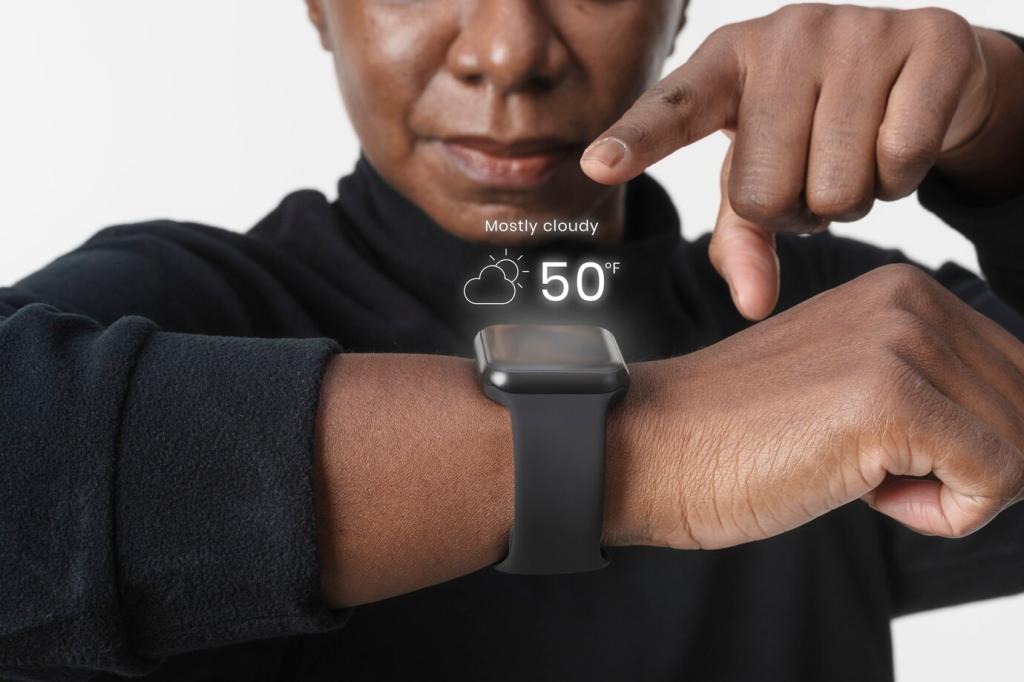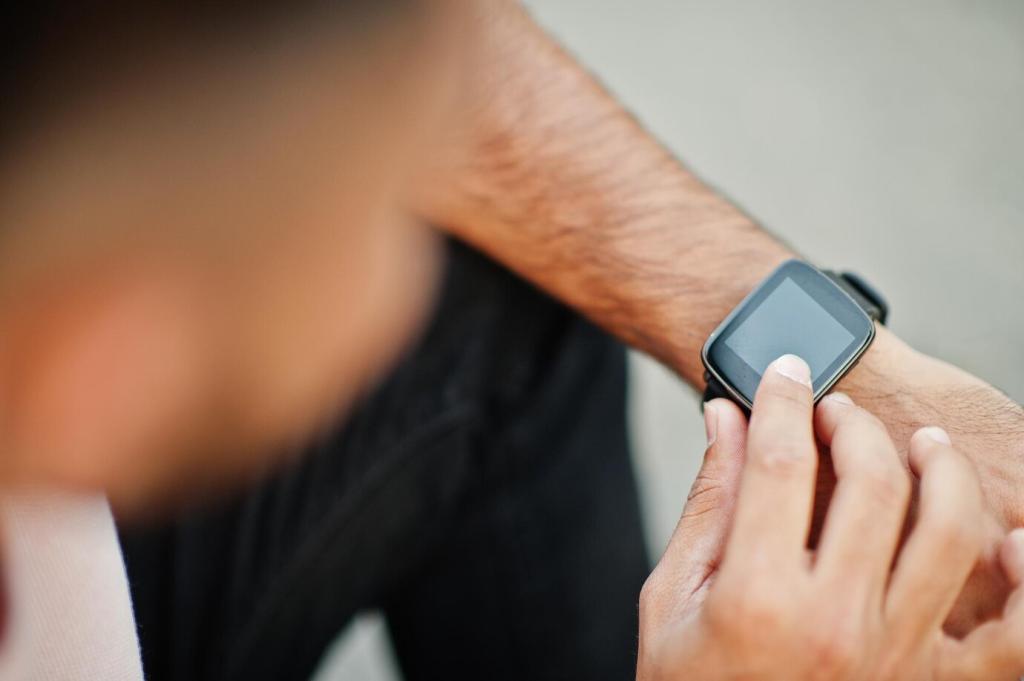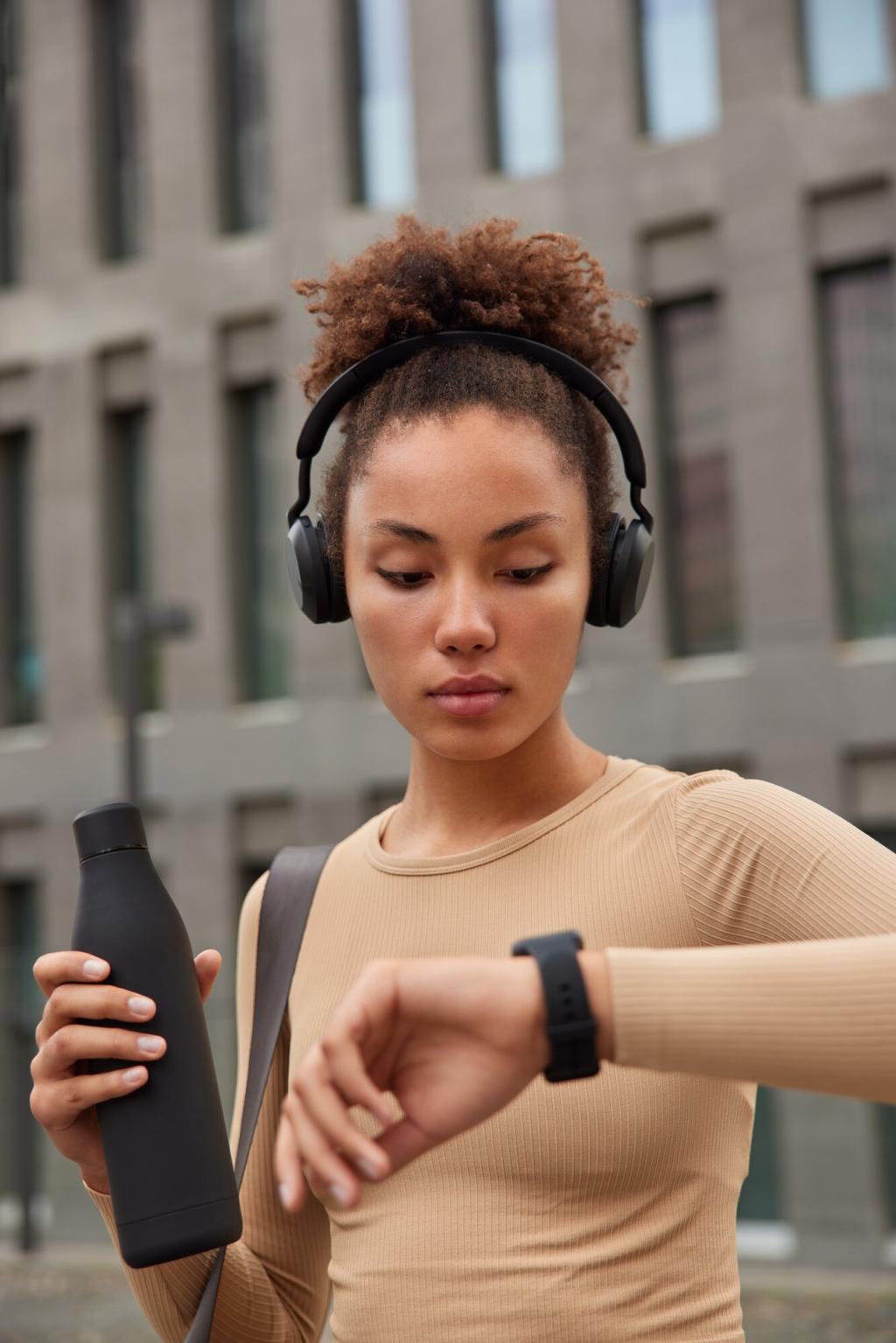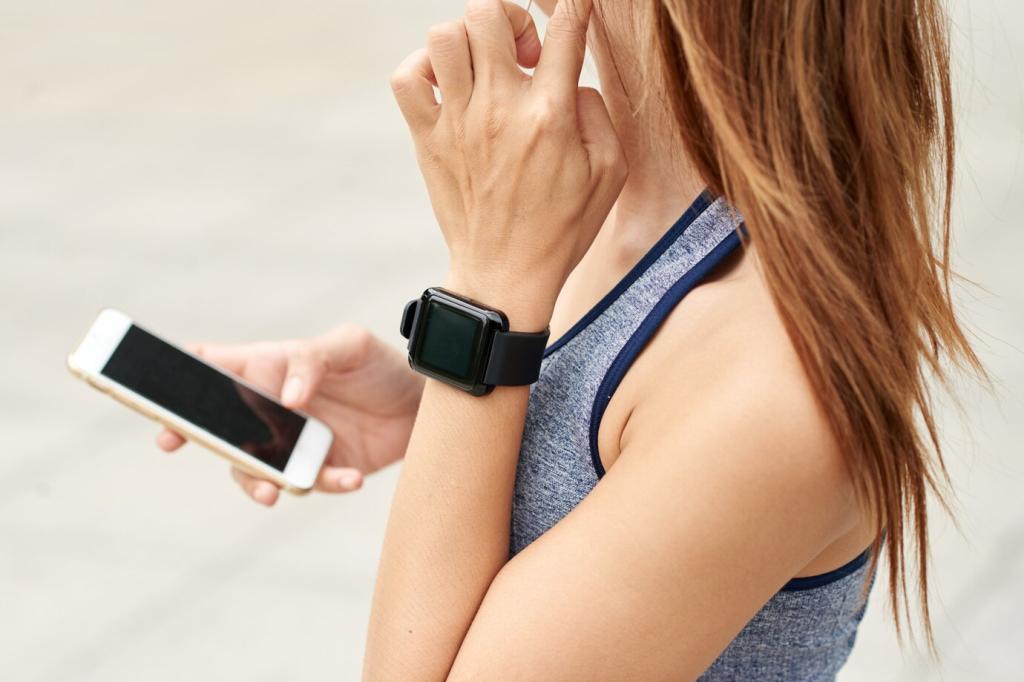Key Features of Wearable Mobile App Development
Chosen theme: Key Features of Wearable Mobile App Development. Explore how to craft tiny, intelligent, and delightful experiences that live on your wrist or clothing—and still feel powerful, human, and indispensable.

Glanceable UX and Micro‑Interactions
A wearable screen should answer one focused question instantly. Prioritize the single next action, trim text ruthlessly, and use clear iconography. Ask yourself: in two seconds, can users understand, act, and move?
Glanceable UX and Micro‑Interactions
Replace multi‑step forms with progressive choices, haptic confirmations, and voice shortcuts. Micro‑flows should adapt to motion, lighting, and hand availability, delivering just‑in‑time steps that never stall a walk, run, or conversation.


Sensor Integration and Data Fidelity
Combine photoplethysmography, accelerometer, gyroscope, and GPS data to smooth noise and detect real trends. Feature fusion reduces false positives and unlocks richer features like cadence‑adjusted heart rate zones.

Power Efficiency and Offline Resilience
Intelligent Sampling and Duty Cycling
Adjust sensor sampling rates dynamically based on activity and intent. Schedule bursts for workouts, trickle during idle periods, and batch network tasks. Smarter duty cycling saves battery without sacrificing usefulness.
Offline‑First Sync and Conflict Handling
Design for patchy connections by queuing events, compressing payloads, and resolving conflicts deterministically. Users should complete workouts or notes entirely offline, then sync seamlessly when connectivity returns.
Bluetooth Low Energy Done Right
Use connectionless advertising when possible, minimize characteristic writes, and keep payloads tiny. Careful GATT design, short sessions, and adaptive intervals improve reliability and extend both phone and wearable battery life.
Haptics, Voice, and Subtle Notifications
Categorize alerts by urgency and choose distinct haptics for each tier. Promote only truly time‑sensitive events to the wrist, and route everything else to the phone or daily summary digest.

Haptics, Voice, and Subtle Notifications
Enable quick commands like “start interval run” or “log water” with minimal confirmations. Pair voice cues with soft haptics to guide steps, perfect for cooking timers or turn‑by‑turn cues while cycling.
Seamless Handoff of State
Persist session context—workout phase, timers, or note drafts—so users can glance on the watch and review insights on the phone. Handoff should be instant, predictable, and resilient to intermittent connectivity.
Companion App as Insight Hub
Keep the watch focused on capture and quick actions, while the phone aggregates trends, coaching, and sharing. This division of labor respects tiny screens and leverages richer visualizations where they belong.
Privacy‑Preserving Sync Strategies
Use end‑to‑end encryption, minimal data scopes, and on‑device derivations. Favor peer‑to‑peer sync when practical, reducing cloud exposure while maintaining a robust backup path for critical history.
Privacy, Consent, and Compliance by Design

Explain each data type’s purpose in everyday language and allow opt‑ins at the feature level. Make it easy to revoke and audit permissions without punishing the user experience or breaking essential flows.
Performance, Testing, and Real‑World Reliability
Cold Start and Latency Budgets
Target sub‑300ms haptic responses and sub‑1s screen updates for critical actions. Prewarm frequently used views, lazy‑load heavy modules, and cache recent metrics to keep interactions snappy on modest hardware.


Test in the Messy Middle
Simulate arm swings, jacket cuffs, rain, and brief Bluetooth drops. Field‑test elevations, tunnels, and gyms. Collect structured feedback from beta runners, nurses, and commuters to surface edge cases early.
Edge AI and Context Awareness on Wearables
Deploy tiny classifiers for activity recognition, anomaly detection, or gesture control. Quantize and prune models to meet memory limits, and keep inference under tight latency to feel magical, not laggy.
Activate models only when relevant cues appear—like motion bursts or location changes. Smart gating preserves power while still catching meaningful moments, from rep counting to micro‑break reminders.
A paramedic shared how wrist‑based voice plus gesture triage cut seconds during drills. Share your stories, subscribe for pattern libraries, and help refine model triggers that prioritize safety and clarity.
